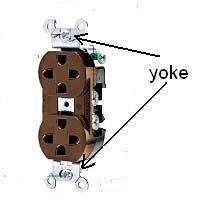maghazadeh
Senior Member
- Location
- Campbell CA
As far as I know duplex receptacles are rated for 125V, then how about when electricians use one duplex for dish washer and disposal, and break off the bridge to separate hot portion of each receptacle, then feed it with 12/3 (2 circuits on A, B phases). Now duplex is receiving 240v.
Go ahead please and post yoour thoughts. Thanks.
Go ahead please and post yoour thoughts. Thanks.



